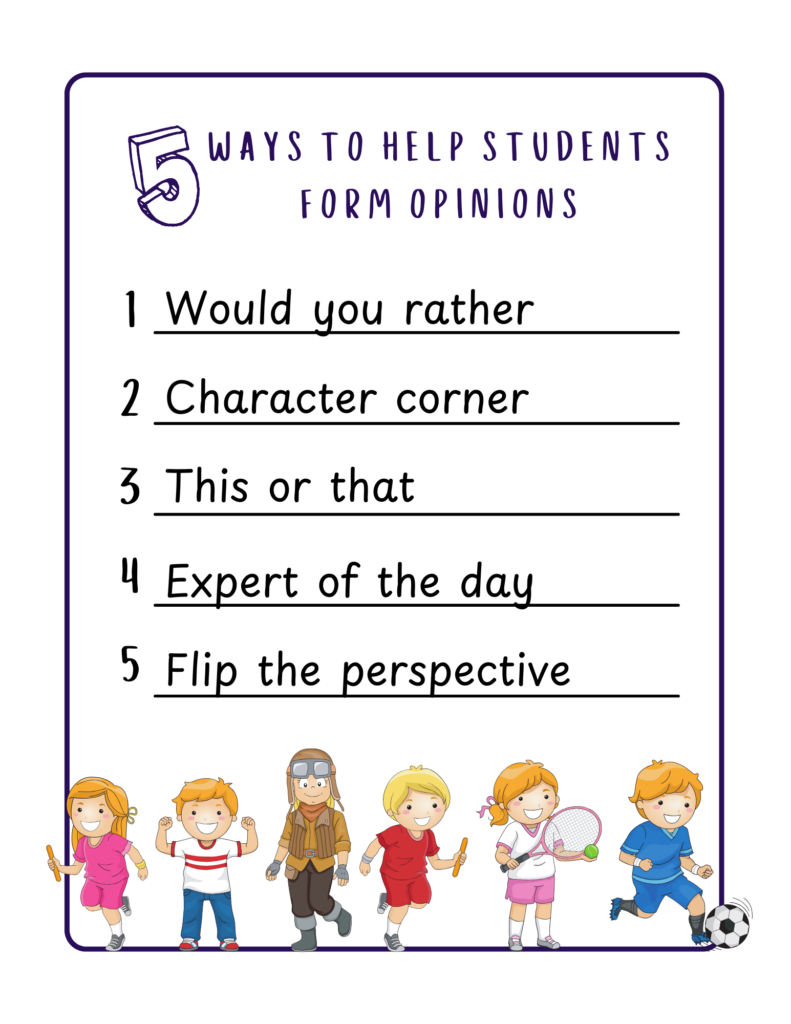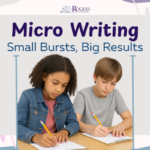Opinion writing can be a struggle when students don’t even know what they think. Before they can craft a strong argument, they need to form one. Here are five engaging strategies to help students develop opinions—and back them up with solid reasoning.
1. Would You Rather…? Debate in Motion
Pose a fun, thought-provoking question: Would you rather live in a treehouse or a submarine? Students physically move to one side of the room based on their choice. Once they settle, prompt them with structured questions:
- Why did you choose this option?
- What makes your choice better than the other?
- What is one strong fact that supports your opinion?
When each side shares, the other side isn’t allowed to say “I disagree”—instead, they must decide if the reasoning is sound. Sentence stems like “One fact that supports this opinion is…” help keep discussions structured. Want to connect to content? Use This or That History Debate to spark lively, curriculum-based discussions.
2. Character Corners: Reacting to Literature
When reading a shared text, stop at key moments and ask, Do you agree with how [character] handled [situation]? Students move to a corner labeled:
- Strongly Agree
- Somewhat Agree
- Somewhat Disagree
- Strongly Disagree
Then, they discuss their stance using evidence from the text. This builds critical thinking and makes opinion writing more natural.
3. This or That: Quickfire Writing
Give students a choice—Nike vs. Under Armour, winter vs. summer, dogs vs. cats—and a minute to brainstorm. Then, set a timer for 60 seconds and have them rapid-write their thoughts. Teach them to “mine their writing” for strong ideas and facts before crafting an opinion statement:
“Dogs are better than cats because they are more loyal and trainable.”
This strategy helps students move from gut reactions to reasoned opinions quickly.
4. Expert for a Day
Let students pick something they love—Minecraft, gymnastics, Marvel movies—and write an opinion piece on why it’s the best. The catch? They must include three solid reasons, each backed by a fact or example. When they write about topics they care about, forming opinions becomes second nature.
5. Flip the Perspective
Challenge students by assigning them the opposite stance of their gut reaction. If they love recess, make them argue for shorter breaks. This forces them to consider multiple viewpoints, strengthening their ability to craft logical, well-supported arguments.
Students will naturally build stronger, more confident arguments by embedding opinion development into engaging activities. Need more strategies? Visit my contact page to explore how I can support your school with hands-on writing workshops!






